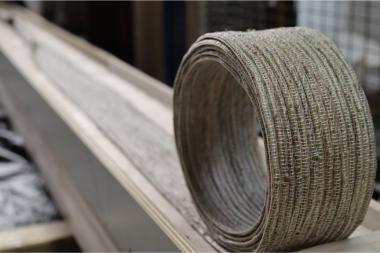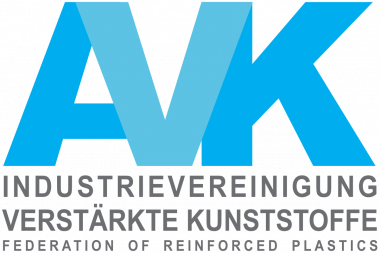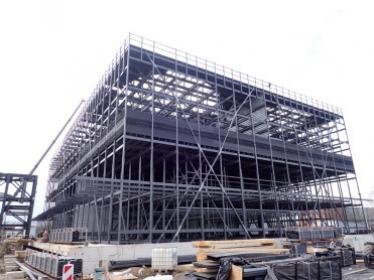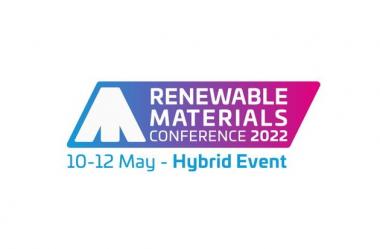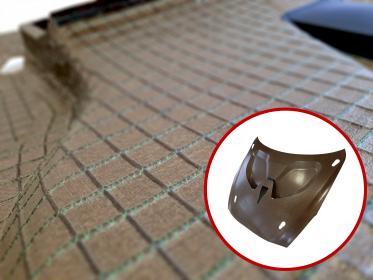Sachsens Umweltminister besuchte STFI
- Austausch über das Netzwerkprojekt Hanfbast Sachsen (HaSaX) ´
Ende Februar besuchte Wolfram Günther, Staatsminister für Energie, Klimaschutz, Umwelt und Landwirtschaft des Freistaats Sachsen, das Sächsische Textilforschungsinstitut e.V. (STFI) in Chemnitz. Gesprächsgegenstand des Besuchs war das Forschungsvorhaben „Hanfbast aus Sachsen“ für eine nachhaltige Produktion von textilen Halbzeugen und Produkten (HaSaX)“. Das STFI erarbeitet zum gegenwärtigen Zeitpunkt ein Forschungsnetzwerk in Kooperation mit der Firma texulting GmbH, Hohenstein-Ernstthal, in dem das Potenzial von Hanfbast als biobasiertes Leichtbaumaterial betrachtet wird.
Das Neue ist; dieser Hanfbast wird aus ungerösteten also naturbelassenen Hanfpflanzen gewonnen und behält damit sein naturgegebenes, sehr hohes Leistungspotenzial. Das Verfahren der Gewinnung ist neu und deshalb gibt es bis zur industrieprozesstauglichen Verarbeitung der Bastfasern viele Entwicklung-schritte, welche bis zur Nutzung des Materials noch zu bewältigen sind. Zusammen mit einer Gruppe sächsischer Mittelständler sucht das STFI deshalb Unterstützung bei der sächsischen Politik zur Umsetzung der noch offenen Entwicklungsaufgaben für die Nutzbarmachung von Hanfbast.
Verfolgt wird die Vision einer vollumfänglichen Nutzung des Hanfes z. B. im Baubereich. Ziel ist es, mit hanfbasierten Sandwichelementen künftig Baustoffe anzubieten, die eine sehr gute Kreislauffähigkeit aufweisen. Hinsichtlich des CO2-Fußabdruckes können hanfbasierte Sandwichelemente mit klassischen Systemen konkurrieren. Neben den Gebäudeinnenschichten, die wegen der guten Dämmeigenschaften auch aus Hanf bestehen, kann dann auch die Gebäudehülle ein Tragelement aus Hanflaminat sein. Der Markt für leichte Gebäudehüllen wächst ständig und legt europa- und deutschlandweit momentan um jährlich 5 % zu – eine gute Perspektive für Bauwerke aus Hanf.
Der Einsatz nachhaltiger und biobasierter Materialien gewinnt in den letzten Jahren immer mehr an Bedeutung. Gründe dafür sind zum einen das steigende Bewusstsein bezüglich Umwelt- und Ressourcenschonung, Verknappung von Rohstoffen jedoch auch die zunehmende Verschärfung der gesetzlichen Vorgaben.
Composites, die aus mineralischen und/oder erdölbasierten Rohstoffen bestehen, weisen von der Erzeugung bis zum Recycling einen erheblichen CO2-Footprint auf. Um die CO2-Emission zu reduzieren, ist der Einsatz biobasierter Hochleistungsfasern anstelle der Glas- oder Kunststofffasern ein Lösungsansatz. Das mechanische Leistungspotenzial von Hanfbast ist vergleichbar mit dem von Glasfasern und wurde unter Nutzung einer neuen Bastfaser-Gewinnungsmethode erstmals 2015 nachgewiesen. So besitzen die aus derart isoliertem Hanfbast hergestellten Composites um bis zu 40 % höhere mechanische Kennwerte als jene Bauteile, bei denen ausschließlich konventionell aufgeschlossene Naturfasern eingesetzt werden.
STFI


